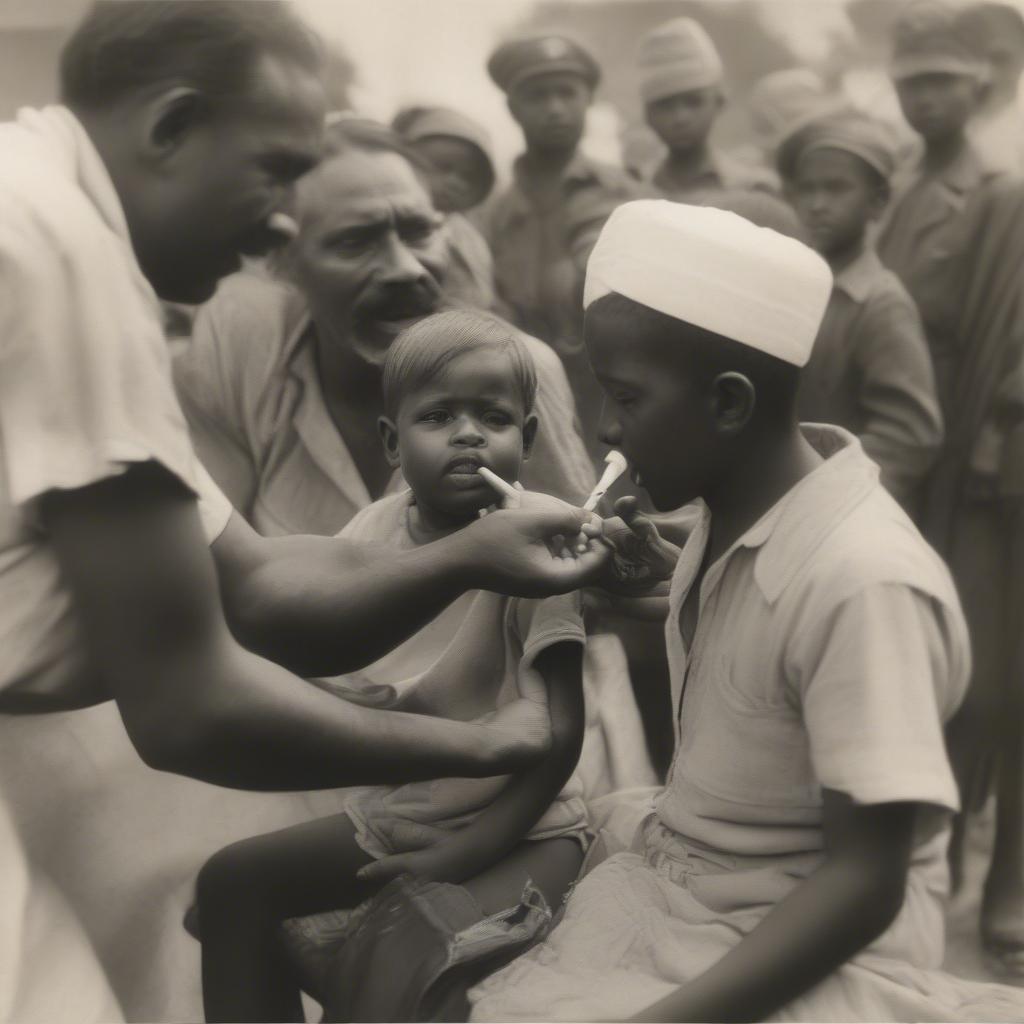
The question of who invented the polio vaccine isn’t a simple one. While Jonas Salk is often solely credited with this monumental achievement, the reality is more nuanced. The development of the polio vaccine was a collaborative effort, built upon decades of research by numerous scientists. Understanding the full story requires exploring the contributions of these individuals and the scientific journey that led to the eradication of this devastating disease.
Table Content:
The Race Against Polio: A Global Effort
Polio, also known as poliomyelitis, was a terrifying disease that plagued communities worldwide for centuries. Its ability to paralyze, particularly children, instilled fear in parents and spurred a global race to find a cure. Before the development of the polio vaccine, outbreaks were common, leaving countless individuals with lifelong disabilities or facing death. The urgent need for a solution fueled intense research and collaboration within the scientific community.
Jonas Salk and the Inactivated Polio Vaccine
Jonas Salk’s name is synonymous with the polio vaccine, and rightfully so. In 1955, Salk announced the successful development of the first effective polio vaccine, an inactivated polio vaccine (IPV). His vaccine utilized killed poliovirus to stimulate an immune response without causing the disease. This breakthrough marked a turning point in the fight against polio and earned Salk widespread acclaim.
Albert Sabin and the Oral Polio Vaccine
While Salk’s inactivated vaccine was a crucial first step, another scientist, Albert Sabin, played a critical role in expanding polio vaccination efforts. Sabin developed an oral polio vaccine (OPV) using a weakened, live form of the virus. Licensed in 1961, the OPV’s ease of administration (oral drops versus injection) made it particularly valuable in mass vaccination campaigns, especially in developing countries.
 Albert Sabin administering the oral polio vaccine
Albert Sabin administering the oral polio vaccine
The Foundation: Earlier Research and Discoveries
Salk and Sabin’s achievements were built upon the groundwork laid by other researchers. Karl Landsteiner and Erwin Popper first identified the poliovirus in 1908. Later, Maurice Brodie and John Kolmer developed experimental vaccines in the 1930s, though these proved unsafe for widespread use. These early efforts, while ultimately unsuccessful, were essential in paving the way for the breakthroughs of Salk and Sabin.
The Enduring Impact: Eradicating a Global Threat
The combined efforts of these scientists and many others have resulted in a dramatic decline in polio cases worldwide. The Global Polio Eradication Initiative, launched in 1988, has been instrumental in coordinating vaccination efforts across the globe. While polio hasn’t been completely eradicated, it remains a testament to the power of scientific collaboration and the impact of vaccination on global health.
 Global Polio Eradication Initiative vaccination campaign
Global Polio Eradication Initiative vaccination campaign
Who Invented the Polio Vaccine: A Shared Legacy
So, who invented the polio vaccine? The answer is both singular and plural. While Jonas Salk is often credited with “the” polio vaccine, the reality is a complex story of scientific progress. Albert Sabin’s contribution, along with the foundational research of countless others, is equally crucial. The polio vaccine story is a powerful example of how scientific collaboration and dedication can conquer even the most challenging diseases.
Conclusion
The development of the polio vaccine is a triumph of human ingenuity and collaboration. While Jonas Salk’s name is often associated with this monumental achievement, the full story highlights the contributions of numerous scientists, including Albert Sabin, and the decades of research that led to this breakthrough. The impact of the polio vaccine on global health is undeniable, reminding us of the power of scientific advancement and the importance of continued efforts towards disease eradication.
FAQ
What are the different types of polio vaccines? There are two main types: the inactivated polio vaccine (IPV) developed by Jonas Salk and the oral polio vaccine (OPV) developed by Albert Sabin.
Is polio still a threat today? While polio cases have drastically decreased, it is still endemic in a few countries. Continued vaccination efforts are crucial for complete eradication.
How effective are the polio vaccines? Both the IPV and OPV are highly effective in preventing polio.
What are the symptoms of polio? Polio symptoms can range from mild flu-like symptoms to paralysis.
Why is polio vaccination important? Polio vaccination protects individuals from this debilitating disease and contributes to global eradication efforts.
Who should get the polio vaccine? The polio vaccine is recommended for all children and adults, especially those traveling to areas where polio is still present.
Are there any side effects of the polio vaccine? Side effects are generally mild and may include soreness at the injection site or mild fever.